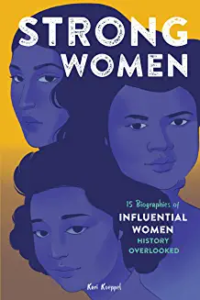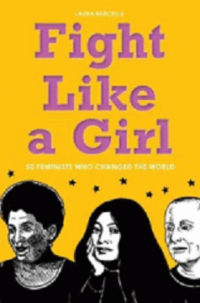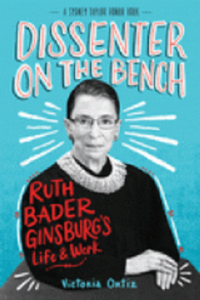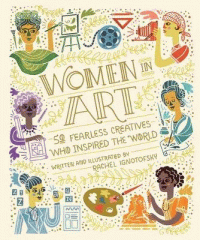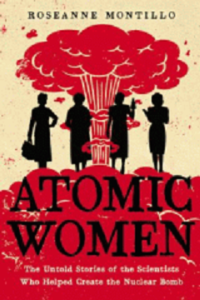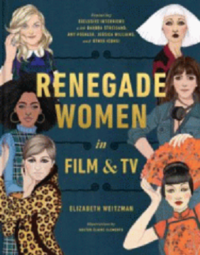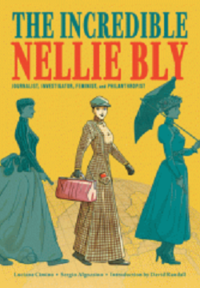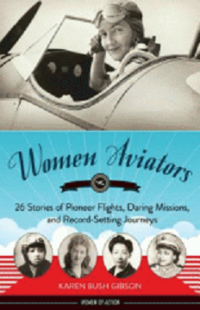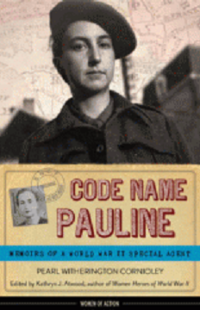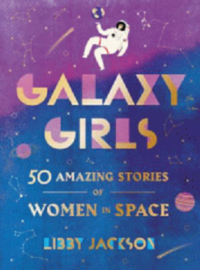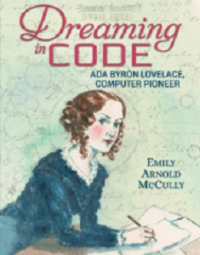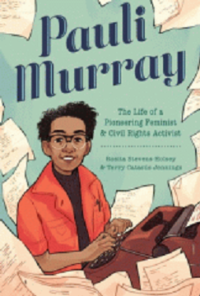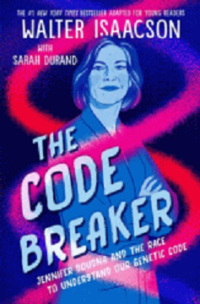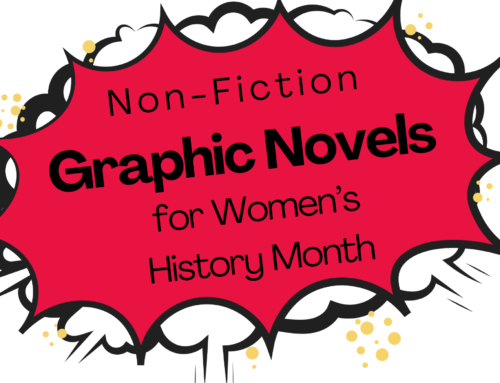
March is full of incredible milestones for women, and it’s no wonder why March is Women’s History Month. The Women’s Suffrage Parade in Washington, D.C., first occurred on March 13, 1913, when women gathered to demand a constitutional amendment guaranteeing their right to vote. On March 22, 1972, the Equal Rights Amendment was passed in the Senate.
Celebrate Women’s History month with these great books about women who paved the way!
This is your chance to get to know 15 equally powerful women who quietly broke barriers and made a lasting impact.
A modern girl is nothing without her squad of besties, but Maggs takes readers on a tour of some of history’s most famous female BFFs. You’ll meet lady pirates, socialites, Olympic skiers and medical students who showed just how essential female friendship has been throughout history– and throughout the world.
Fight like a Girl: 50 Feminists Who Changed the World by Laura Barcella
Fight Like a Girl introduces readers to the history of feminist activism in the U.S. in an effort to celebrate those who paved the way and draw attention to those who are working hard to further the feminist cause today.
Alice Paul and the Fight for Women’s Rights: From the Vote to the Equal Rights Amendment by Deborah Kops
Alice Paul reignited the sleepy suffrage moment with dramatic demonstrations and provocative banners. After women won the vote in 1920, Paul wrote the Equal Rights Amendment (ERA), which would make all the laws that discriminated against women unconstitutional. Paul saw another chance to advance women’s rights when the landmark Civil Rights Act of 1964 began moving through Congress. Kops introduces readers to this relatively unknown leader of the women’s movement, and the changing times in which she lived.
Dissenter on the Bench: Ruth Bader Ginsburg’s Life & Work by Victoria Ortiz
The life and career of the fiercely principled Supreme Court Justice, now a popular icon, with dramatic accounts of her landmark cases that moved the needle on legal protection of human rights, illustrated with black and white archival photographs.
Women in Art: 50 Fearless Creatives Who Inspired the World by Rachel Ignotofsky
Illustrated profiles of 50 pioneering female artists–from the 11th century to today–from the author of the New York Times bestseller Women in Science.
Atomic Women: The Untold Stories of the Scientists Who Helped Create the Nuclear Bomb by Roseanne Montillo
They were leaning over the edge of the unknown and afraid of what they would discover there: Meet the World War II female scientists who worked in the secret sites of the Manhattan Project. Recruited not only from labs and universities from across the United States but also from countries abroad, these scientists helped in — and often initiated — the development of the atomic bomb, taking starring roles in the Manhattan Project. In fact, their involvement was critical to its success, though many of them were not fully aware of the consequences. The atomic women include: Lise Meitner and Iraene Joliot-Curie (daughter of Marie Curie), who led the groundwork for the Manhattan Project from Europe; Elizabeth Rona, the foremost expert in plutonium, who gave rise to the “Fat Man” and “Little Boy,” the bombs dropped over Japan;Leona Woods, Elizabeth Graves, and Joan Hinton, who were inspired by European scientific ideals but carved their own paths.
Renegade Women in Film & TV by Elizabeth Weitzman
From 19th century iconoclast Alice Guy Blache to 21st century trailblazer Ava DuVernay, Renegade Women honors the women who succeeded against all odds, changing their industry in front of the camera and behind the scenes.
Women Heroes of the American Revolution: 20 Stories of Espionage, Sabotage, Defiance, and Rescue by Susan Casey
Susan Casey gives 20 remarkable girls and women the spotlight they deserve in this lively collection of biographical profiles. These women took action in many ways: as spies, soldiers, nurses, water carriers, fundraisers, writers, couriers, and more. Women Heroes of the American Revolution brings a fresh new perspective to their stories resulting from interviews with historians and with descendants of participants of the Revolution and features ample excerpts from primary source documents.
Nellie Bly by Luciana Cimino
Born in 1864, Nellie Bly was a woman who did not allow herself to be defined by the time she lived in, she rewrote the narrative and made her own way. This beautifully executed graphic novel paints a portrait of a woman who defied societal expectations–not only with her investigative journalism, but with her keen mind for industry, and her original inventions.
Women Aviators: 26 Stories of Pioneer Flights, Daring Missions, and Record-setting Journeys by Karen Bush Gibson
Profiles the lives and careers of twenty-six women who were pioneers in the field of aviation.
Code Name Pauline: Memoirs of a World War II Special Agent by Pearl Witherington Cornioley
The as yet unpublished memoirs for young adults of the only female SOE agent to lead a French Resistance network during World War II.
Galaxy Girls: 50 Amazing Stories of Women in Space by LIbby Jackson
Filled with beautiful full-color illustrations, a groundbreaking compendium honoring the amazing true stories of fifty inspirational women who helped fuel some of the greatest achievements in space exploration from the nineteenth century to today–including Hidden Figures Mary Jackson and Katherine Johnson as well as former NASA Chief Astronaut Peggy Whitson, the record-holding American biochemistry researcher who has spent the most cumulative time in space. Written by Libby Jackson, a leading British expert in human space flight, and illustrated with striking artwork from the students of London College of Communication, Galaxy Girls will fire the imaginations of trailblazers of all ages.
Dreaming in Code: Ada Byron Lovelace, Computer Pioneer by Emily Arnold McCully
Even by 1800s standards, Ada Byron Lovelace had an unusual upbringing. Her narcissistic mother worked hard at cultivating her own role as martyred ex-wife of bad-boy poet Lord Byron and had Ada tutored at home by some of the brightest minds. Ada developed a hunger for mental puzzles, mathematical conundrums, and scientific discovery that kept pace with the breathtaking advances of the industrial and social revolutions taking place in Europe. At seventeen, Ada met inventor Charles Babbage. In spite of the difference of their years, they were kindred spirits and intellects. Their ensuing collaborations would ultimately result in ideas that presaged computer programming by a century. Ada Lovelace is today recognized and celebrated as a pioneer and a prophet of the information age.
Pauli Murray: The Life of a Pioneering Feminist and Civil Rights Activist by Rosita Stevens-Holsey and Terry Catasús Jennings
Written in verse, this inspiring biography chronicles the life of a queer civil rights and women’s rights activist who fought for many of the rights taken for granted today, working tirelessly for human rights and the dignity of life for all.
When Jennifer Doudna was a sixth grader in Hilo, Hawaii, she came home from school one afternoon and found a book on her bed. It was The Double Helix, James Watson’s account of how he and Francis Crick had discovered the structure of DNA, the spiral-staircase molecule that carries the genetic instruction code for all forms of life.This book guided Jennifer Doudna to focus her studies not on DNA, but on what seemed to take a backseat in biochemistry: figuring out the structure of RNA, a closely related molecule that enables the genetic instructions coded in DNA to express themselves. Doudna became an expert in determining the shapes and structures of these RNA molecules—an expertise that led her to develop a revolutionary new technique that could edit human genes.

